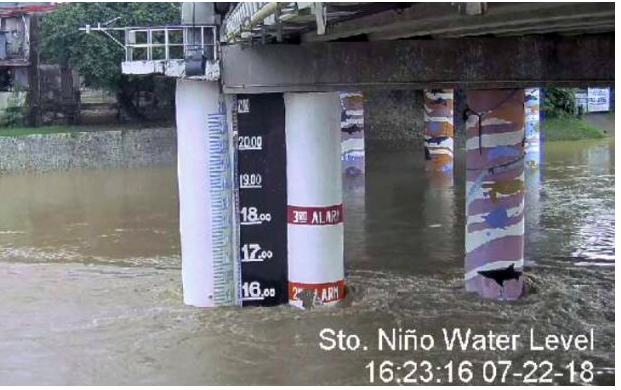Marikina City, the shoe capital of the Philippines, is located by the banks of the Marikina River and is thus regularly prone to flooding and is also at risk from sea level rise. Marikina River flows into the Pasig River, which ultimately flows out to Manila Bay. During the typhoon season between August and November, floodwaters overflow into the riverbanks of Marikina River. These floodwaters then disperse to the lowlands in the vicinity of Marikina River.
But it is just as important to note that the cause of flooding does not all emanate from the rising trend of floodwaters from Marikina alone. Floodwaters also travel downwards from the upper Marikina ridges such as Montalban, San Mateo, Rizal and from the Sierra Madre Mountains, Rodriguez, Rizal.
Marikina River suffers from toxins, not only on the surface but also down to the riverbed. It will be an impossible task to clean Marikina River without cleansing the waste and effluents from Montalban, San Mateo, Rizal and from the Sierra Madre mountains, Rodriguez, Rizal first before they flow down to the Marikina River, and add to the pollutants on the surface and bottom of the Marikina River brought about by the residents of surrounding LGUs.
During the rainy season, flooding from Marikina River can be avoided by taking pre-cautionary measures: Enlarging the river basin of Marikina River is one step. Building higher floodwalls is another. Cleaning up the riverbed by means of dredging its stored debris is a third step. Fourthly, making each and every town accountable for cleaning up the debris in their riverbank rather than pinpointing to other sources of debris. A fifth measure would be to install fines. The city needs to be charged if they don’t clean up the debris along their riverbank. A sixth measure would be to involve the Department of Transportation (DOTr) that could provide the use of public ferries in both the Marikina River and Pasig River in lieu of adding to the heavy traffic in EDSA.
The building of public ferries, which if proven profitable, may entice the private sector to invest as well. The DOTr could also suggest beautification efforts to both the public and private sectors such as transforming the Marikina and the Pasig riverbanks into a VENICE of the Philippines.
There are 6 major companies operating by the banks of Marikina River. These are: The Super-Ferry Shipping Company, which owns and manages the ferries that ply the Marikina River and Pasig River; the Marikina Shoe Gallery that manufactures Marikina-made shoes; Converse, a leading manufacturer of rubber shoes; the RDC Riverbanks Development Corporation, which acquired 23 hectares of land on both sides of the Marikina River; the Riverbanks Center, noted for having the most number of name brand outlet stores, a 20,000-seater amphitheater, and the Riverbend Hotel; and last but not the least, the Coats Manila Bay Inc., an international Marikina-based company in the textile business. These 6 major companies by the riverbanks could each be assigned to clean up the river on a 1:1 ratio, where 1 company cleans for 1 month in a year. The remaining 6 months could be split among the 6 LGUs along the riverbanks that directly affect the Marikina River such as: Marikina, Pasig City, Pateros, Makati, Mandaluyong, and Old Manila. This arrangement could hopefully free up some resources of the LGUs to purchase low cost sewage treatment plants for the sections populated by poor informal settlers.
Since the Marikina River and Laguna Bay flow into the Pasig River, it is important to note that according to Sciencing.com, human waste accounts for 65% of the pollution in Pasig River. Thus, it is of extreme importance and urgency to undertake the procurement of low cost sewage treatment plants in the identified LGUs affecting the Marikina River.
